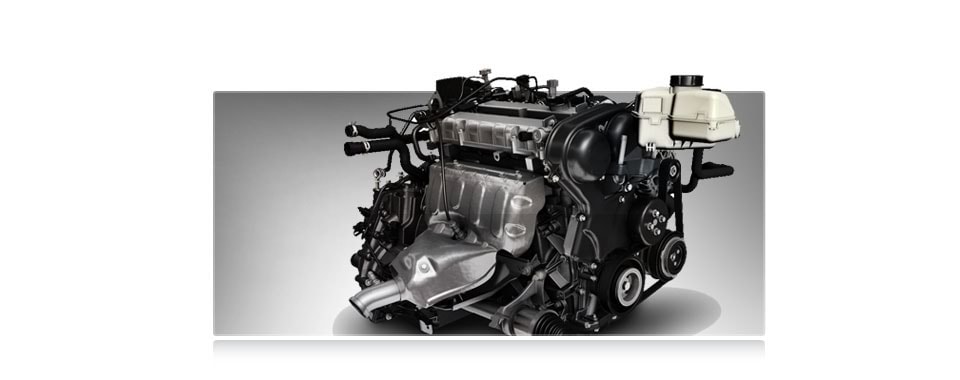Ford Motor Company has decided that the 4 cylinder 1.6 liter unit destined for the U.S. 2011 Ford Fiesta will be developed in Brazil, with Ford’s Taubate, Sao Paolo, factory being used to manufacture the engines. Currently the facility produces about 280,000 engines per year.
The unit has an aluminum block and head, and delivers estimated figures of 119 HP and 109 ft-lb of torque and promises to offer a 40 mpg highway fuel consumption figure in the Fiesta. Its most important technology however is the twin Independent variable camshaft timing (ti-vct).
Ti-vct offers variable control of the period of time in which both intake and exhaust valves are simultaneously open. The system also optimizes phasing on both intake and exhaust camshafts. Thus throttle response is enhanced, emissions are reduced and high rpm efficiency is increased. In other words, this is one of Ford’s solutions for downsizing.
The engine will be matted to either a 5 speed manual transmission or a six-speed dual clutch automatic one.
The Fiesta is eagerly anticipated in the U.S., where it will be available this summer with a manufacturer suggested retail price of $13,320. Ford has even created a Fiesta movement to prepare the car’s U.S. launch, as 100 European spec Fiestas have been driven over 1.5 million miles by 100 people over a 6 month period.
If you feel the need to get closer to the U.S. Fiesta, please feel free to browse the dedicated section of the company's website. If you decide to do so one of the things you’ ll be able to see is a blurry rendering of the sedan version in the background.
The unit has an aluminum block and head, and delivers estimated figures of 119 HP and 109 ft-lb of torque and promises to offer a 40 mpg highway fuel consumption figure in the Fiesta. Its most important technology however is the twin Independent variable camshaft timing (ti-vct).
Ti-vct offers variable control of the period of time in which both intake and exhaust valves are simultaneously open. The system also optimizes phasing on both intake and exhaust camshafts. Thus throttle response is enhanced, emissions are reduced and high rpm efficiency is increased. In other words, this is one of Ford’s solutions for downsizing.
The engine will be matted to either a 5 speed manual transmission or a six-speed dual clutch automatic one.
The Fiesta is eagerly anticipated in the U.S., where it will be available this summer with a manufacturer suggested retail price of $13,320. Ford has even created a Fiesta movement to prepare the car’s U.S. launch, as 100 European spec Fiestas have been driven over 1.5 million miles by 100 people over a 6 month period.
If you feel the need to get closer to the U.S. Fiesta, please feel free to browse the dedicated section of the company's website. If you decide to do so one of the things you’ ll be able to see is a blurry rendering of the sedan version in the background.

